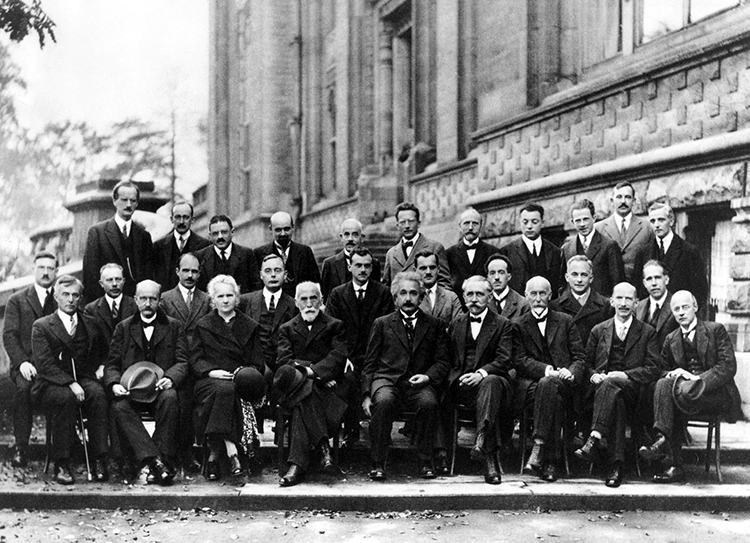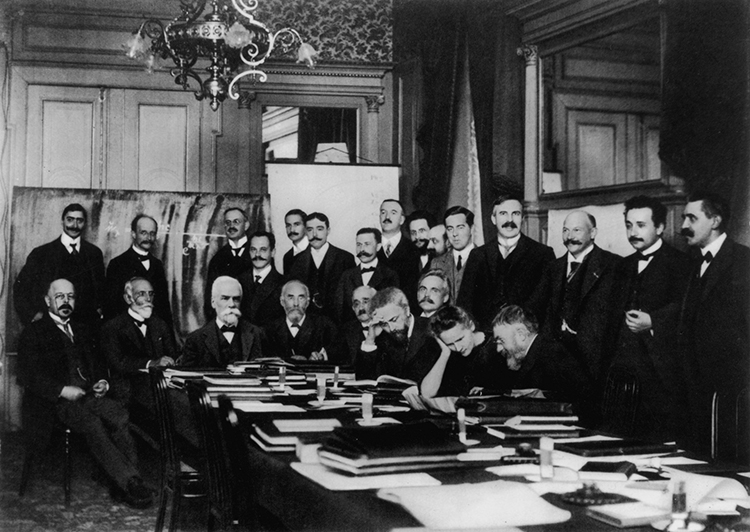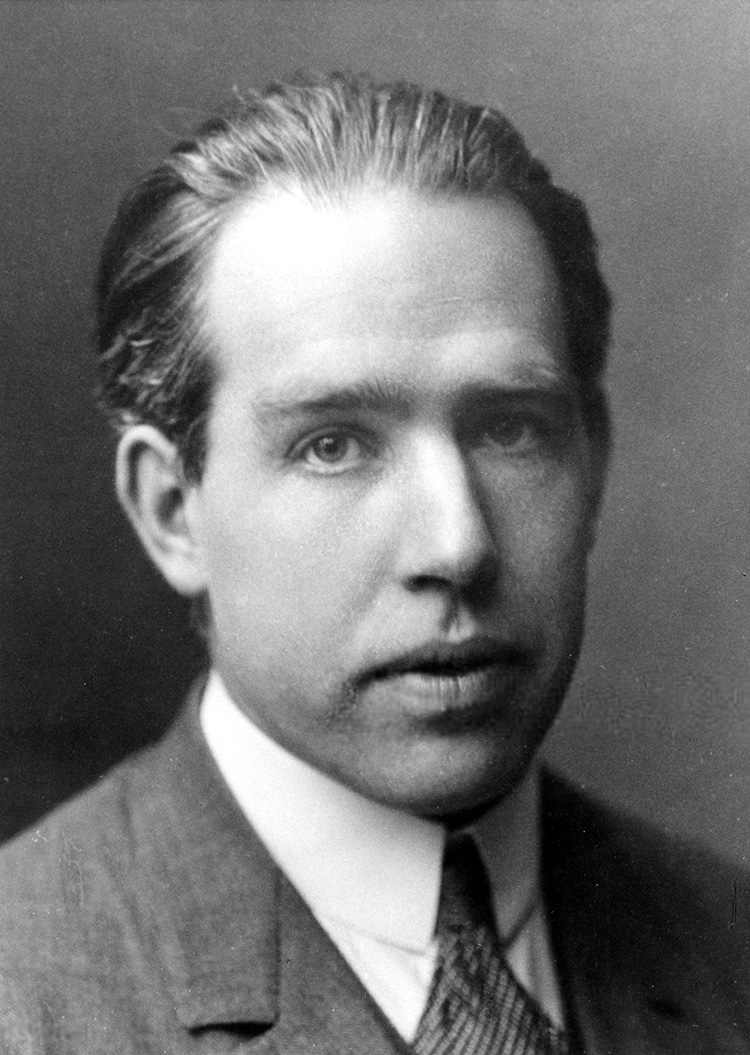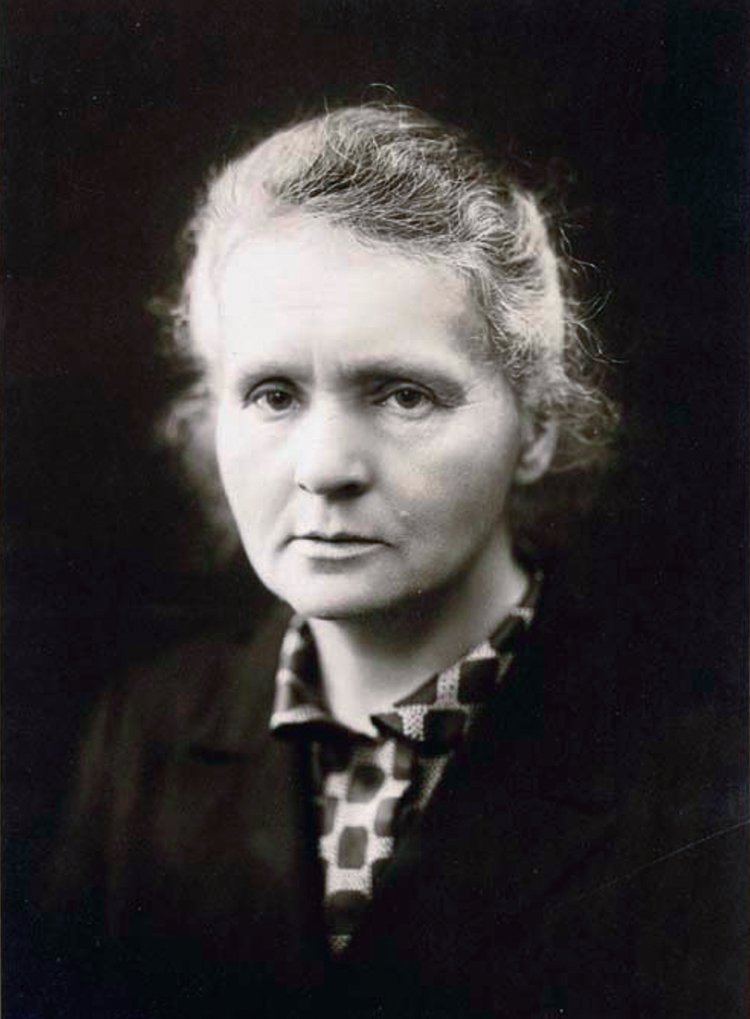The Fifth Solvay Conference on Quantum Mechanics in 1927, Brussels.
Photo by Benjamin Couprie.
(Photo:Wikimedia Commons[Public domain])
How many geniuses can one room hold?

The Fifth Solvay Conference on Quantum Mechanics in 1927, Brussels. Photo by Benjamin Couprie. From back row to front, reading left to right: Auguste Piccard, Émile Henriot, Paul Ehrenfest, Édouard Herzen, Théophile de Donder, Erwin Schrödinger, Jules-Émile Verschaffelt, Wolfgang Pauli, Werner Heisenberg, Ralph Howard Fowler, Léon Brillouin, Peter Debye, Martin Knudsen, William Lawrence Bragg, Hendrik Anthony Kramers, Paul Dirac, Arthur Compton, Louis de Broglie, Max Born, Niels Bohr, Irving Langmuir, Max Planck, Marie Skłodowska Curie, Hendrik Lorentz, Albert Einstein, Paul Langevin, Charles-Eugène Guye, Charles Thomson Rees Wilson, Owen Willans Richardson. (Photo:Wikimedia Commons[Public domain])
In 1927, 29 of the world’s most brilliant minds gathered in Brussels for the Fifth Solvay Conference.
The only woman in attendance in 1911 was Marie Curie, the legendary researcher of radioactivity.
Despite Madame Curies' accomplishments, women were incredibly rare in STEM in the early 20th century.

First Solvay Conference in 1911, Brussels. Photo by Benjamin Couprie. Seated (left to right): Walther Nernst, Marcel Brillouin, Ernest Solvay, Hendrik Lorentz, Emil Warburg, Jean Baptiste Perrin, Wilhelm Wien, Marie Skłodowska-Curie, and Henri Poincaré.Standing (left to right): Robert Goldschmidt, Max Planck, Heinrich Rubens, Arnold Sommerfeld, Frederick Lindemann, Maurice de Broglie, Martin Knudsen, Friedrich Hasenöhrl, Georges Hostelet, Edouard Herzen, James Hopwood Jeans, Ernest Rutherford, Heike Kamerlingh Onnes, Albert Einstein, and Paul Langevin. (Photo:Wikimedia Commons[Public domain])
Einstein and Planck returned.
Of the 29 scientists at the conference, 17 would win Nobel prizes in their lifetime.
First Solvay Conference in 1911, Brussels.

Neils Bohr, winner of the Nobel Prize in Physics in 1922 for his work on atoms and their radiation. He developed the Bohr model to describe electrons, their charges, and how they move between orbits. (Photo:Wikimedia Commons[Public domain])
Photo by Benjamin Couprie.
He developed the Bohr model to describe electrons, their charges, and how they move between orbits.
She was one of the most distinguished scientists in attendance with two Noble Prizes.

Marie Curie, two-time Nobel Laureate in Physics and Chemistry respectively. Curie was the first female professor at the University of Paris. Photo by Henri manuel circa 1920. (Photo:Wikimedi Commons[Public domain])
To this day, she is the only person to accomplish this.
Marie Curie, two-time Nobel Laureate in Physics and Chemistry respectively.
Curie was the first female professor at the University of Paris.
Photo by Henri manuel circa 1920.